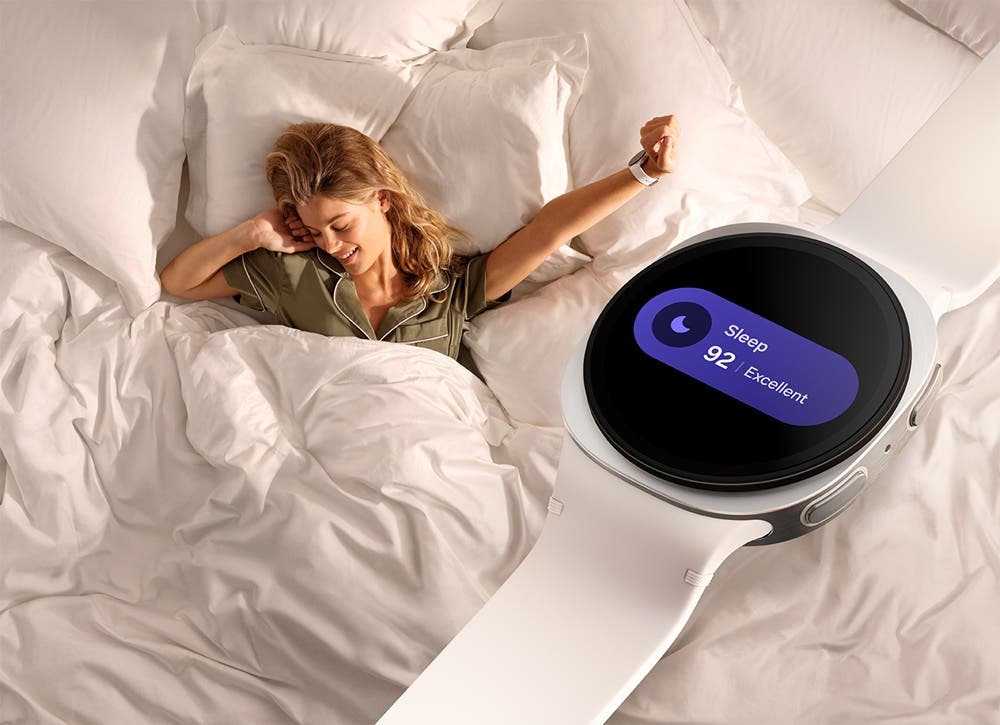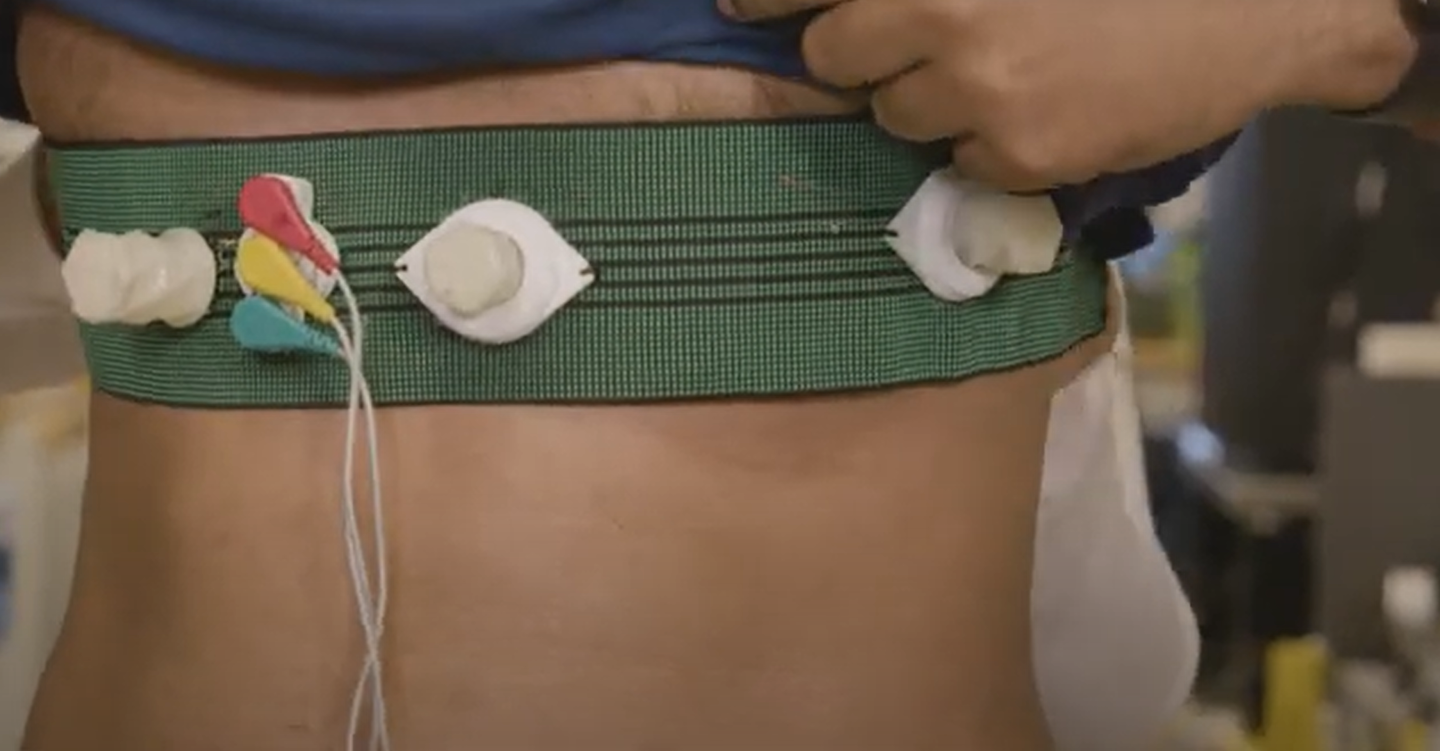New Samsung Galaxy watch feature uses math to fix your sleep and boost mental health
A new sleep algorithm on Samsung Galaxy watches offers personalized bedtime tips to improve mood and mental health.

A new sleep tool developed by Korean researchers uses your body’s rhythm to suggest ideal bedtimes and boost your mental health. (CREDIT: CC BY-SA 4.0)
A good night’s sleep isn’t just about how many hours you clock — it’s about when you fall asleep. For millions of people struggling with restless nights, shifting work schedules, or irregular routines, simply tracking past sleep doesn’t help. Now, a mathematical approach to sleep science might finally offer the tools you need to reset your sleep rhythm and protect your mental health.
A Sleep Forecast, Not Just a Sleep Diary
More than 80% of people across the globe deal with irregular sleep habits. These sleep struggles don’t just affect your energy; they ripple across your mental and physical well-being. With sleep disruptions linked to depression, anxiety, and other disorders, there’s growing urgency to find smarter ways to monitor and fix our sleep.
A new sleep algorithm, created by Professor Jae Kyoung Kim at the Korea Advanced Institute of Science and Technology (KAIST) and the Institute for Basic Science, does more than report your previous night’s rest. It recommends when you should go to bed — down to the minute. Think of it like a weather forecast, but for your sleep.
“Instead of just telling you what happened yesterday, it helps you prepare for tomorrow — so you can sleep better and feel better,” said Professor Kim.
This tool doesn’t rely on vague advice like “get more sleep.” It uses mathematical modeling and insights from your body’s internal clock — your circadian rhythm — to give you a custom sleep window. You might get a message saying, “Going to bed between 11:10 p.m. and 11:40 p.m. is ideal for you tonight.” That precision helps you align your sleep with your body’s natural rhythms, making it easier to fall asleep and wake up refreshed.
From Math Lab to Smartwatch
What started as a mathematical biology project became a real product after three years of research. “We faced a lot of challenges trying to turn our research into a real product,” said Kim. “People kept asking us when they could try the algorithm, and we always felt bad that we couldn’t release it properly.”
Related Stories
- Sedentary Work and Sleep Loss: Modern Jobs Linked to Insomnia
- Daylight Saving Time takes a much bigger toll on sleep and health than experts realized
- Researchers discover the ideal temperature for a healthier and more regenerative sleep
Now, thanks to support from KAIST’s Technology Commercialization Center and a partnership with Samsung, the algorithm is part of Galaxy Watch devices, including the new Galaxy Watch8. Instead of generic sleep tips, you get a personalized, science-backed guide on your wrist.
Kim's work has not only attracted commercial interest but also academic recognition. His sleep algorithm was highlighted at the 2025 SLEEP conference in the United States and will be presented again at World Sleep 2025 in Singapore.
Why Circadian Rhythms Matter
Your circadian rhythm is more than just a sleep timer. It governs countless body functions, including hormone levels, mood, metabolism, and body temperature. It's regulated by central and peripheral clocks inside your body that need to stay in sync.
But when these clocks fall out of step with each other — or with your behavior — problems arise. Shorter gaps between your sleep and your biological rhythm, for example, have been linked to greater risk of depression.
Studies show that people with misaligned internal rhythms are more likely to experience mood issues, appetite changes, difficulty concentrating, and other symptoms of depression. These effects are especially common in shift workers and medical trainees, whose schedules often clash with natural rhythms.
Wearables Bring the Lab to Life
Although lab studies have shown how circadian rhythm disruptions affect mental health, collecting similar data in everyday life has been a challenge. That’s where wearable devices come in. They record heart rate, movement, and sleep data continuously, giving researchers a real-time view of your inner clock.
One project — the Intern Health Study — tracked sleep patterns, heart rates, and moods of medical residents. It found that those who slept less, stayed up later, or had irregular sleep schedules were more likely to show signs of depression.
Researchers then created advanced models, like nonlinear Kalman filtering, to extract meaningful circadian biomarkers from the data. These models allowed them to detect three main signs of disruption: misalignment between the central body clock and sleep midpoint, misalignment with peripheral rhythms, and internal misalignment between the two clocks.
Among these, the gap between the central clock and sleep midpoint was found to have the strongest effect on next-day mood. Interestingly, mood also influenced how in sync the internal clocks were with each other. This two-way relationship hints at how sleep and mood constantly interact.
Digital Twins and Mood Prediction
Pushing this research further, a collaboration between KAIST and the University of Michigan developed a digital twin of the circadian clock. This digital version estimates the phase and disruption level of your rhythm using wearable data, without needing blood tests or costly lab work.
The model was tested on nearly 800 shift workers. It successfully predicted mood changes and symptoms of depression, including suicidal thoughts, by analyzing the timing and misalignment of their biological clocks.
Such tools could offer huge benefits for groups that are often underserved by traditional mental health care. Wearables could send early warnings when someone’s rhythms are off, prompting them to take action — like seeking counseling or adjusting their sleep schedule — before symptoms get worse.
“This study presents a new paradigm for mental health care,” said Professor Dae Wook Kim of KAIST. “It is very meaningful to conduct research that provides clues for applying wearable biometric data to actual disease management.”
From Lab Innovation to Everyday Health
The possibilities go far beyond smartwatches. These digital tools and mathematical models can help you take charge of your sleep and mental health, even if you don’t work a night shift or have a diagnosed disorder. If your schedule is chaotic, if you feel tired but can’t sleep, or if your mood swings are getting harder to handle, paying attention to your circadian rhythm might be the missing piece.
Professor Kim, who also leads the Biomedical Mathematics Group at IBS, continues to push for more personalized health tech. In partnership with Professor Eun Yeon Joo at Samsung Medical Center, his team is also working on “SLEEPS,” a tool that predicts sleep disorders and is freely available at sleep-math.com.
He’s not just building apps — he’s building a movement. By combining mathematics, wearable sensors, and cutting-edge sleep science, Kim and his team are transforming how we understand rest and recovery. It’s a fresh way to look at an age-old problem, and it might just help you sleep a little better tonight.
Note: The article above provided above by The Brighter Side of News.
Like these kind of feel good stories? Get The Brighter Side of News' newsletter.



